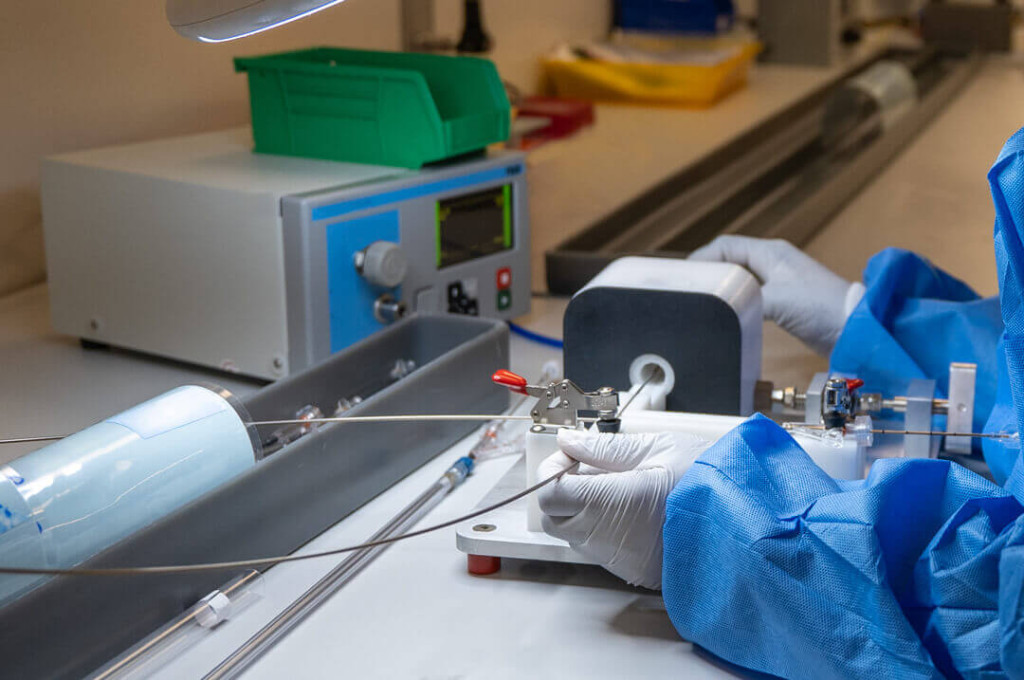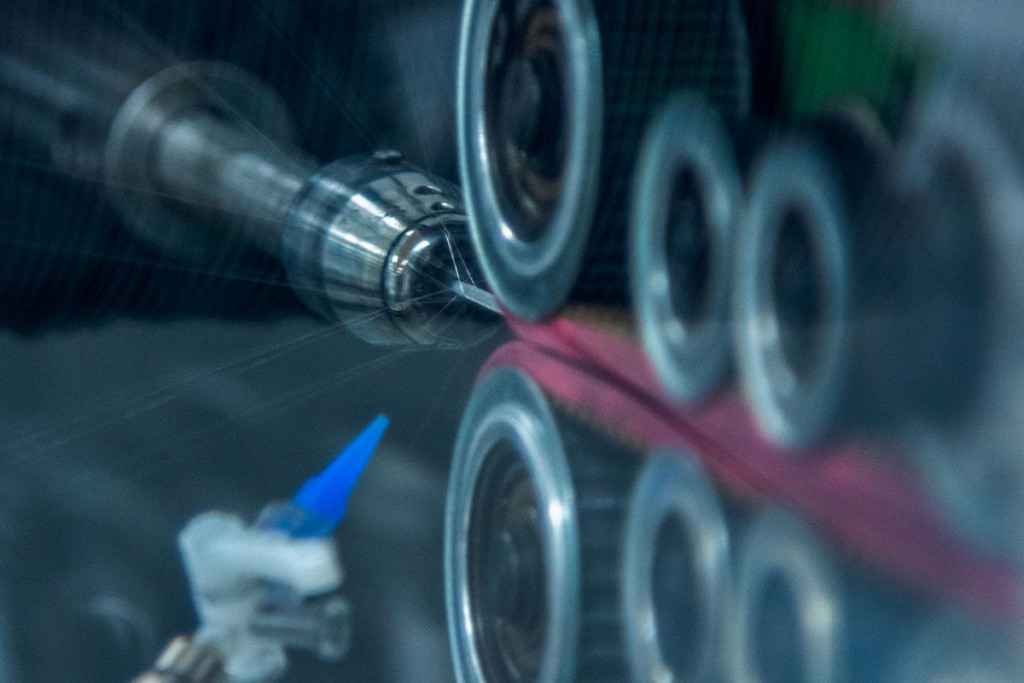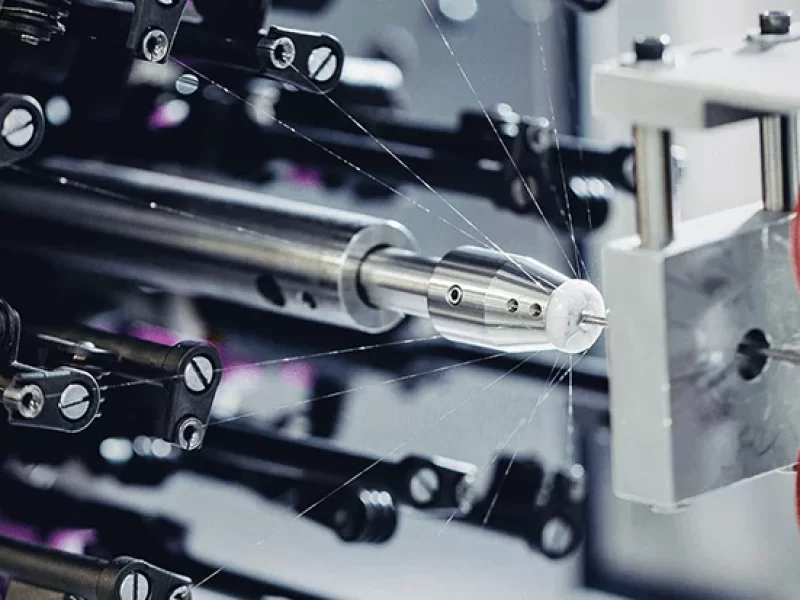Today, Process Design and Tools have a fundamental role in the medical device industry. This sector requires high standards of quality, safety, and efficiency in its products due to the impact that these attributes have on their adoption.
By designing their processes and tools, companies can increase their productivity and become more profitable due to the efficient use of resources. However, they must have the necessary experience and knowledge to face the challenges and opportunities in the market.

Process Design and Tools for Medical Devices
Seisa Medical specializes in Process Design and Tools, providing comprehensive solutions in the medical device sector. Our approach begins with a detailed client needs analysis to ensure optimal results. The careful selection of materials is critical for device performance, safety, durability, and cost-effectiveness. We thoroughly evaluate candidate materials, considering their advantages and disadvantages, to meet functional and regulatory requirements.
Benefits of Process Design and Tools Adapted to Your Medical Device
Process and tool design services are essential. They allow to create efficient solutions for the needs of patients and healthcare professionals. Some of the benefits of contracting these services are:
Cost Reduction and Efficient Development:
Our process design and tool capabilities minimize costs and enhance operational efficiency, accelerating the development of medical instruments. By optimizing manufacturing processes, we identify areas for cost reduction, resulting in economic benefits for clients and faster time-to-market for their products.
Mitigation of Distribution Risks and Accelerated Product Marketing:
Process and tool design services mitigate distribution risks and expedite the product marketing cycle. We ensure compliance with industry regulations, enabling clients to navigate the complex landscape of medical device distribution confidently.
Strengthening Technological Knowledge and Expanding Intellectual Property Portfolio:
Engaging our expertise empowers clients to strengthen their technical knowledge and expand their intellectual property (IP) portfolio. By collaborating closely, we foster innovation and identify opportunities for IP generation, safeguarding their competitive advantage.
Facilitating Supply Chain Creation and Avoiding Long-Term Issues:
We assist clients in creating a robust supply chain, overcoming short and long-term challenges. Thorough assessments and best practices ensure a seamless flow of components, fostering stability and customer satisfaction.
Experience and Expertise in Process Design and Tools
At Seisa Medical, we have over 35 years of experience designing tools for medical device manufacturing, making us one of the most reliable companies in the market. Our highly trained engineers and designers provide quality services, adhering to strict standards and process controls.
Our vertical integration strategy allows us to control every process, from initial contact to project completion. This seamless integration of design and manufacturing consistently achieves exceptional results in each project we undertake.
Our expertise in Process Design and Tools ensures that every device we create meets the highest performance, safety, and functionality standards. We prioritize understanding and addressing our client’s needs, delivering tailored solutions to their unique challenges.
Collaborating with Seisa Medical means benefiting from our wealth of experience, expertise, and commitment to excellence. From conceptualization to manufacturing, we execute every aspect of the process meticulously, ensuring the highest quality standards.
What applications due Process Design and Tools have?
At Seisa Medical, we understand the importance of reliable and high-quality equipment for the production process, from prototyping to mass production. Our advanced technologies include the following:
Injection and extrusion:
These techniques produce medical devices made from thermoplastic materials. Injection molding creates intricate shapes with high precision, while extrusion is used for manufacturing tubes and catheters.
Laser cutting and welding:
Laser technology provides accurate and clean cuts, making it ideal for intricate designs and delicate materials. Laser welding ensures solid and reliable bonds between components, ensuring device integrity.
Machining and unique alloy solutions:
Machining processes shape and finish components using precision tools. It is commonly used for producing metal implants and surgical instruments. Unique alloy solutions, such as titanium alloys, are utilized for their biocompatibility and strength in implants and prosthetics.
Manufacture of molds:
Molds are crucial for mass production, allowing for replicating precise geometries. Advanced mold manufacturing techniques ensure consistency and quality throughout the manufacturing process.
Plastic prototyping:
Rapid prototyping techniques, such as 3D printing, are used for the quick and cost-effective creation of plastic prototypes. This allows for design validation and functional testing before full-scale production.
The Technology We Use
Seisa Medical is a leader in process design and tools, utilizing advanced technologies to deliver optimized products with effective and efficient designs. The key technologies we employ include:
3D Modeling Software:
Our team utilizes sophisticated 3D modeling software to visualize and precisely conceptualize designs, facilitating efficient prototyping.
High-Precision CNC Machines:
We operate state-of-the-art CNC machines that ensure accuracy and reliability in manufacturing, delivering consistently high-quality products.
Optical, Electronic, and Mechanical Measurement and Control Equipment:
We employ innovative equipment to monitor and validate critical aspects of the manufacturing process, ensuring strict adherence to specifications and quality standards.
CAD/CAM Tools:
Our engineers use advanced CAD/CAM tools for seamless design and manufacturing, optimizing efficiency and accuracy.
Thanks to these technologies, Seisa Medical offers optimized products with effective and efficient designs, guaranteeing their sustainability in the market.
Seisa Medical value-added Services in Process Design and Tools
At Seisa Medical, we add value to each of our plans, not just providing a solution but also leveraging the experience of our specialists. For example, the prototyping service makes it possible to validate medical devices’ design, functionality, and feasibility before mass-producing.
In this way, by purchasing one of our custom designs, you will enjoy many advantages that will make your company more competitive. Some of our added values are the reduction of costs and development times, the optimization of performance, and the quality of the products.

Process and Tooling Design FAQ
Q. What are the most used materials in the manufacture of medical devices?
A. The most used metals are titanium, platinum, palladium, tantalum, and stainless steel. While for plastics, the most common are polypropylene, polycarbonate, and polyethylene.
Q. What is the classification of medical devices?
A. Medical devices are classified as invasive, non-invasive, and active medical equipment. Another classification commonly used is Class I, Class II and Class III medical devices. Read our blog about medical device classification to learn more about this.
Q. What are the process design and tools for medical devices?
A. The design of processes and tools uses a holistic strategy that constantly seeks to improve the product through verification and validation processes. This strategy goes through several stages: the identification of user needs, the input of the design, the design process, the output of the invention, and the installation of mass production.
Q. What considerations must be considered when designing processes and tools for manufacturing medical devices?
A. When designing processes and tools for the manufacture of medical devices, the needs of each client must be considered. In addition, it must be ensured that the materials used are adequate and that all current standards and regulations are complied with.
Q. What are the best practices for efficiently designing processes and tools in the medical device industry?
A. During the design of processes and tools, each project must comply with a series of tests, verifications, and validations that guarantee its functionality, usability, and reliability. These validations obey the current regulatory environment and follow national and international standards.
Q. How do you select the right tools for manufacturing medical devices?
A. To select the right tools, it is necessary to conduct a detailed analysis of different factors such as the type and function of the device, quality requirements, safety and efficacy, materials and costs, and production times.
Q. What are the common challenges in designing processes and tools for medical devices, and how are they overcome?
A. The design of processes and tools for medical devices involves several challenges, such as safety, efficacy, quality, regulation, and innovation. Some ways to overcome these challenges are:
- Implement quality management systems.
- Collaborate with other healthcare, academic, and industrial professionals to share knowledge and experiences.
- Follow international standards and guidelines for developing and evaluating medical devices.
- Encourage creativity and innovation.
